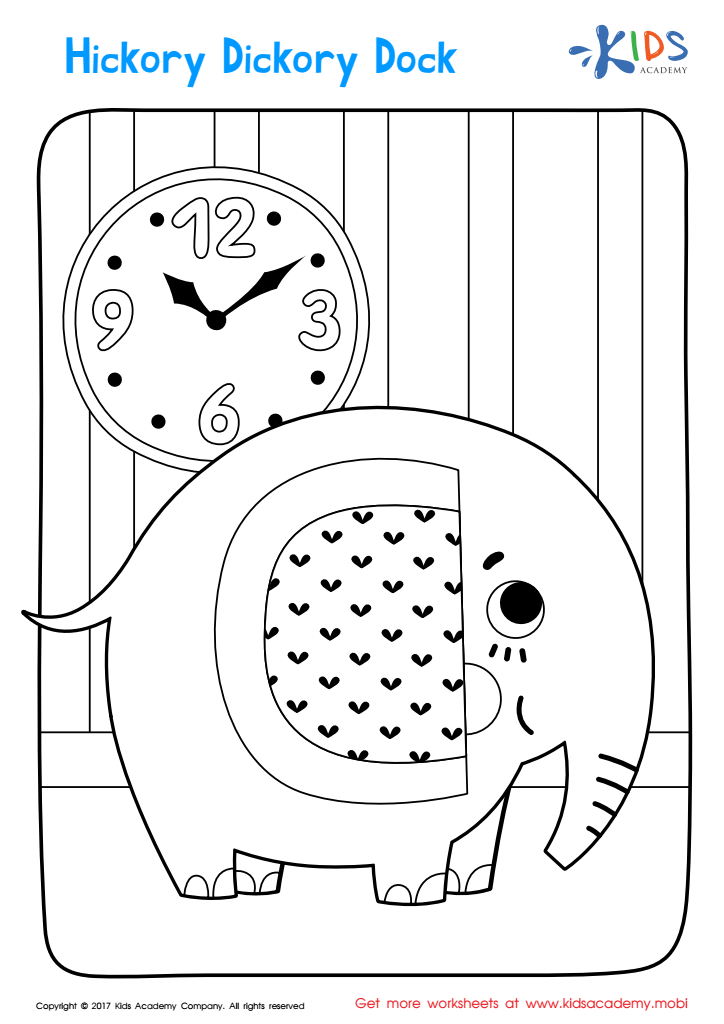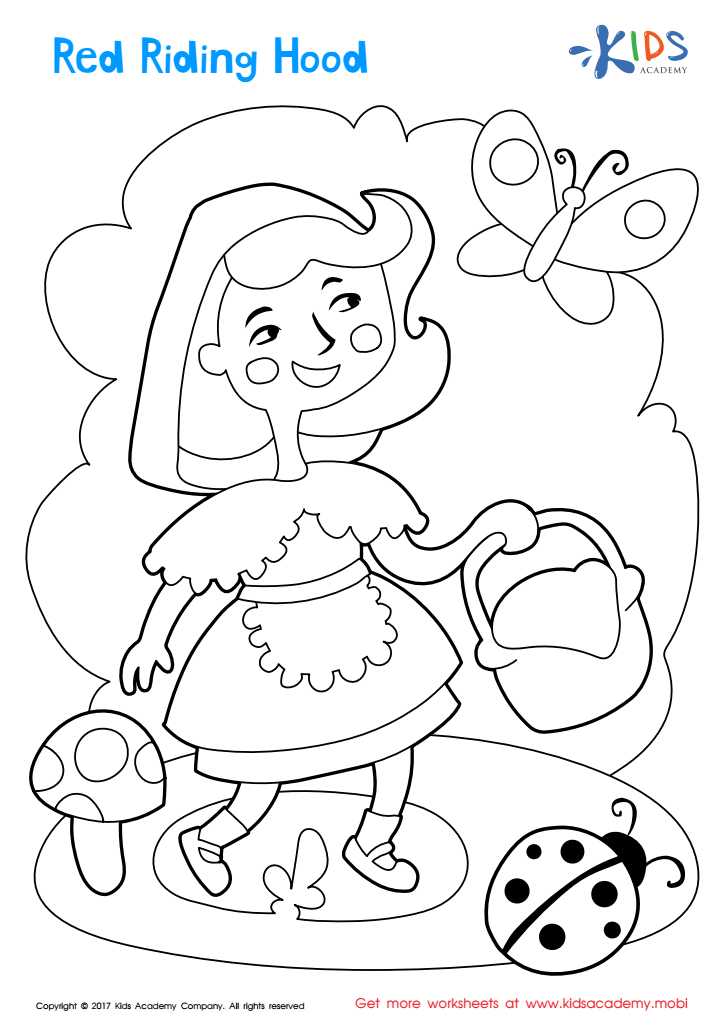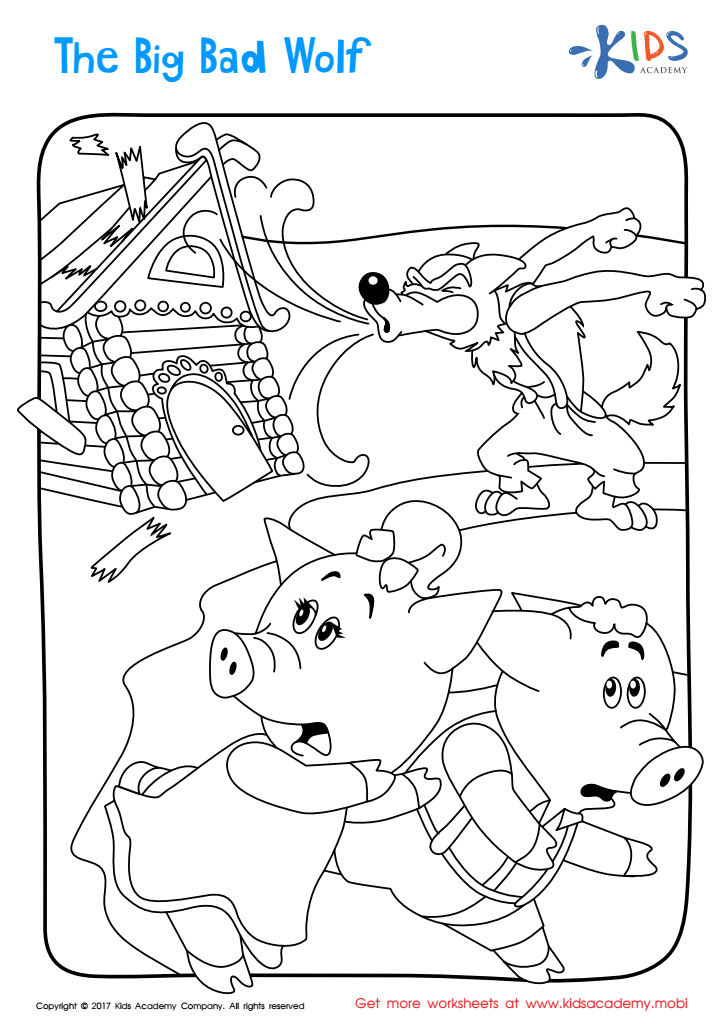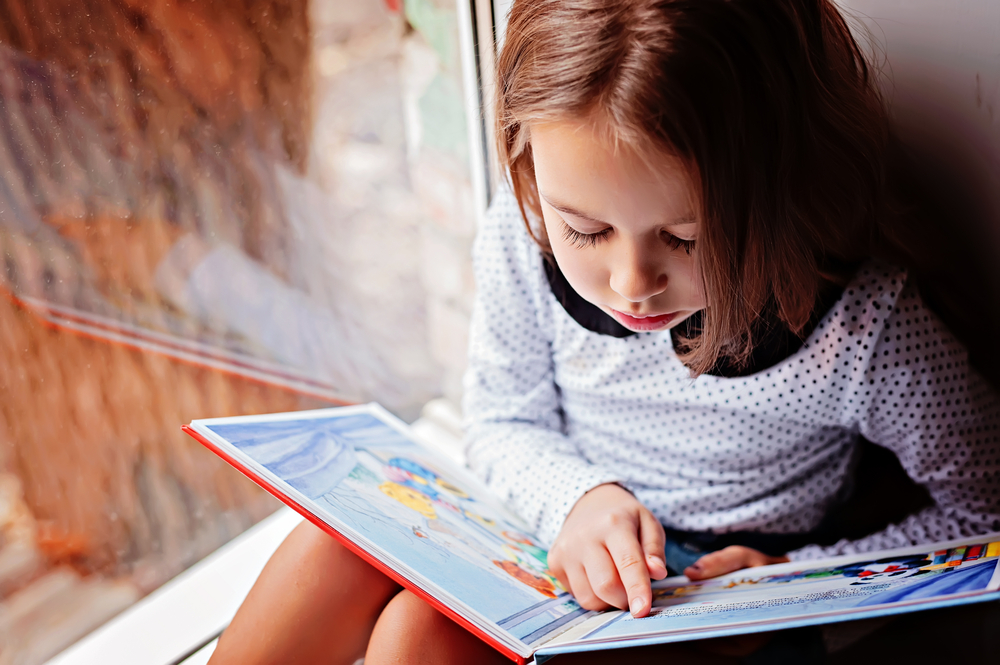Color recognition Reading Fiction Worksheets for Ages 5-6
6 filtered results
-
From - To
Discover our engaging collection of Color Recognition Reading Fiction Worksheets designed specifically for children ages 5-6. These interactive worksheets combine the joy of storytelling with essential color recognition skills, making learning both fun and effective. Your little learners will enjoy colorful illustrations and captivating tales that stimulate their imagination while reinforcing their ability to identify and name different colors. Perfect for home or classroom use, these worksheets support early literacy development and enhance cognitive skills. Empower your young readers to explore the world around them through vivid colors and delightful stories. Start their learning adventure today!


Pre–reading Worksheet: What Do You See?


Little Blue Belle Worksheet


Twinkle Twinkle Little Star Coloring Page


Hickory Dickory Dock Coloring Page


Red Riding Hood Coloring Page


Big Bad Wolf Printable Coloring Page
Color recognition plays a crucial role in early childhood development, particularly for children aged 5-6 who are beginning to explore literacy and engage with fiction. Developing color recognition skills helps children make connections between the world around them and their reading experiences. When children can recognize colors, they can better understand descriptions in stories, which enhances their comprehension and engagement with the text.
Additionally, recognizing colors aids in vocabulary development and language skills. From vibrant picture books adorned with multicolored illustrations to narratives describing colorful settings and characters, engagement in color-rich literature cultivates a child’s ability to visualize and interpret the story. This visual stimulus encourages imagination, stimulating discussions around themes and emotions conveyed through vibrant imagery.
Furthermore, recognizing colors is fundamental to fostering social and emotional development. It encourages creativity and self-expression during activities like drawing or storytelling, promoting confidence as children offer their interpretations of the stories they encounter.
By integrating color recognition into reading activities, parents and teachers can create a more dynamic learning environment. Ultimately, nurturing this foundational skill prepares children not only for academic success but also for appreciating literature’s vivid world, aligning with their developmental stage and enhancing their overall learning experience.

 Assign to My Students
Assign to My Students










.jpg)









